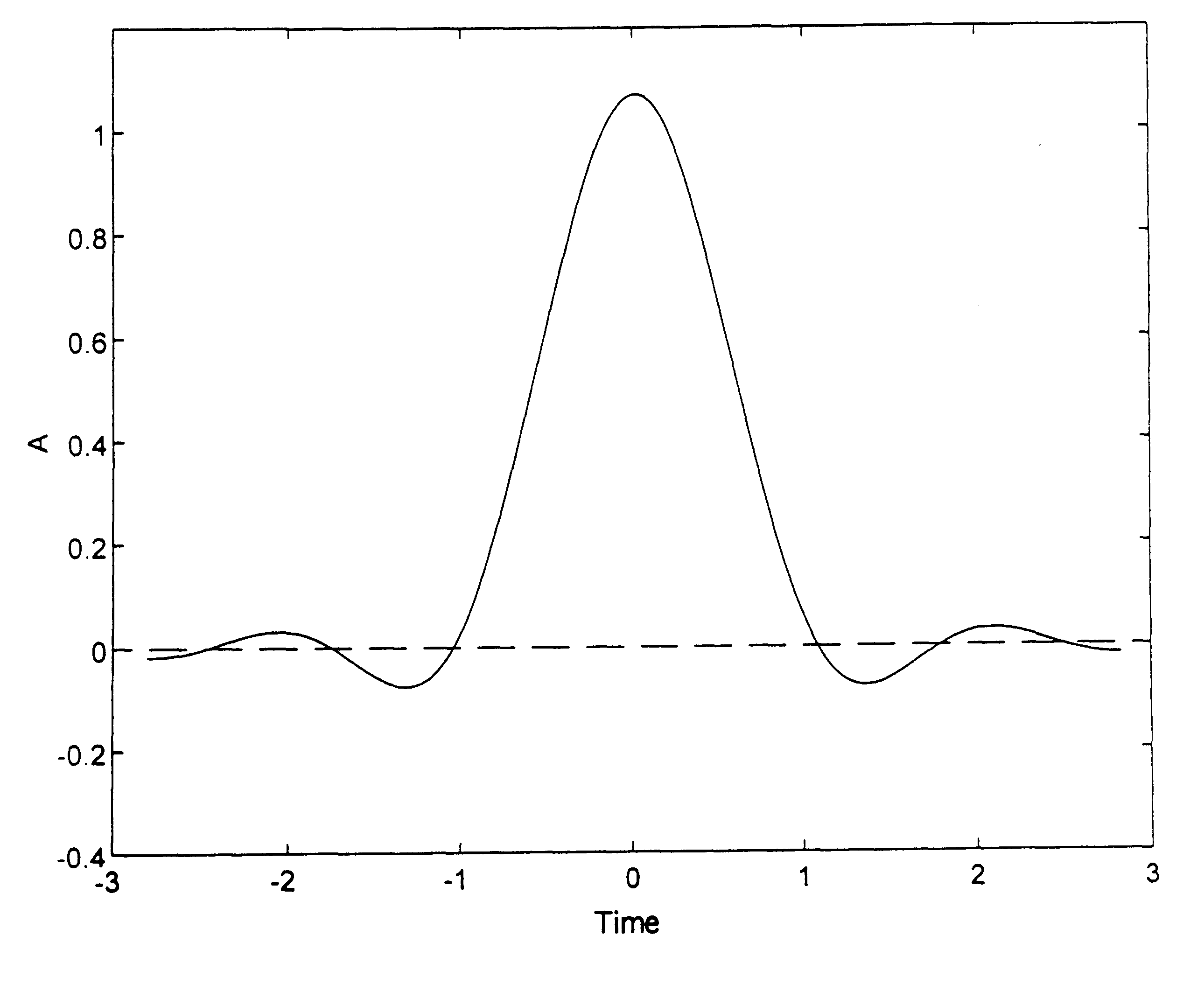Construction of a multicarrier signal
a multi-carrier signal and construction technology, applied in the direction of orthogonal multiplex, multiplex communication, multi-frequency code system, etc., can solve the problems of requiring the use of a guard interval, affecting the efficiency of the system, and many drawbacks of the known system
- Summary
- Abstract
- Description
- Claims
- Application Information
AI Technical Summary
Benefits of technology
Problems solved by technology
Method used
Image
Examples
Embodiment Construction
5.1. List of Figures
FIG. 1 illustrates a lattice with a density 1, corresponding to the one implemented in the case of the known OFDM / QAM modulation;
FIG. 2 illustrates a lattice with a density 2, corresponding to the one implemented in the case of the known OFDM / OQAM modulation, and in the case of the invention;
FIGS. 3A to 3D, 4C to 4D, 5A to 5D, 6A to 6D and 7A to 7D respectively show the known OFDM / QAM modulation (3), OFDM / QAM modulation with guard interval (4), OFDM / OQAM modulation (5) and the types of modulation used in the invention namely OFDM / MSK modulation (6) and OFDM / IOTA modulation (7), according to the following aspects:
A: the prototype function x(t);
B: the linear Fourier transform of the prototype function;
C: the modulus of the linear ambiguity function (as defined in Appendix 2);
D: the intersymbol function (as defined in Appendix 2);
FIG. 7E shows the decrease of the signal OFDM / IOTA in logarithmic scale;
FIG. 8 shows the ambiguity function of a Gaussian function;
FIG. 9 ...
PUM
 Login to View More
Login to View More Abstract
Description
Claims
Application Information
 Login to View More
Login to View More - R&D
- Intellectual Property
- Life Sciences
- Materials
- Tech Scout
- Unparalleled Data Quality
- Higher Quality Content
- 60% Fewer Hallucinations
Browse by: Latest US Patents, China's latest patents, Technical Efficacy Thesaurus, Application Domain, Technology Topic, Popular Technical Reports.
© 2025 PatSnap. All rights reserved.Legal|Privacy policy|Modern Slavery Act Transparency Statement|Sitemap|About US| Contact US: help@patsnap.com



